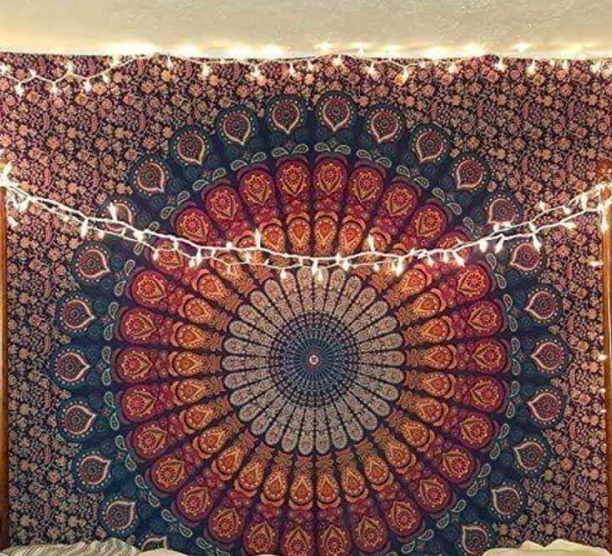What is a Tapestry and where it is used?
Tapestry is an embroidery is an image woven into fabric. It’s an ornamental floor covering where you hold tight the divider, with definite pictures or plans on it. A few embroideries, similar to the renowned Unicorn Tapestries, recount stories with their photos. Meshing a picture into material is smart – it makes craftsmanship available and compact.
Embroidery is probably the most established type of woven material in tapestry. As a procedure, embroidery has been utilized to make everything from tunics and satchels to table covers and seat backs, as well as a portion of the world’s biggest and most wonderful bits of material workmanship.
History Of Tapestry
This set of experiences of embroideries shows plainly that a woven artwork tapestry in your home brings inside magnificence as well as a feeling of history. European weavers have delivered these materials for a really long time, including archaic, renaissance and Arts and Crafts periods. This follows a background marked by embroideries from the old Egyptians to now – including middle age embroidery winding around, Francois Boucher, Les Gobelins studios, and William Morris.
Embroidered artwork winding around has been known for many years in different societies. Both antiquated Egyptians and the Incas covered their dead in embroidery woven dress. A woven artwork, woven enlivening texture, the plan of which is developed throughout winding around. Extensively, the name has been utilized for practically any weighty material, handwoven, machine woven, or even weaved, used to cover furniture, dividers, or floors or for the embellishment of apparel. Significant urban structures of the Greek Empire, including the Parthenon, took care of dividers by them. Anyway it was the French archaic weavers who carried the specialty to completion.
Here are some 5 amazing artists who have thought out of the box in the field of creativity. They have given a new way to the field of tapestry with their creative minds.
Michael Crompton
Being brought into the world in the textile area of Radcliffe, Manchester it was not really shocking that Michael followed a day to day existence in winding around. Not in the modern circle but rather continuing in the strides of the little nation studio. Starting in the mid 1960’s winding around tweed textures he immediately fostered an interest in the specialty of woven embroidered works of art.
Sue Spooner
For a long time she planned and made woven and sewn pieces of clothing affected by the stripe and mathematical examples of North Africa and Oriental materials. She currently focuses exclusively on making woven artwork wall decorations, mostly for presentation and commission. Sue has worked and revamped pictures from the scene and modern paleontology of her neighborhood Cornwall, as well as regions in Cyprus, Crete, Spain and California.
Tella Fuller
Land Fuller is a multidisciplinary artist who is impacted by native societies from around the world. She has displayed widely on the east and west coast and is right now figuring out how to make quilts with an Amish ace quilter from her old neighborhood. Her interactive media work, drawings, photos, recordings, floor coverings, and bushels, have been displayed in New York City, Chicago, and Los Angeles, Berlin, New Zealand, Hungary and Wales.
Gavin Turk
Gavin Turk is a British craftsman viewed as one of the most captivating of the relative multitude of Young British Artists. In spite of the fact that he was not at first keen on making woven artworks, Turk became enlivened by Alighiero Boetti, an Italian craftsman who made a weaving of the world guide with every nation produced using its own banner. Impacted by this piece, Gavin Turk made his Mappa del Mundo from road waste like fresh parcels, drinks jars and cigarette bundles, delivering them into a two-layered world that could be held tight by a divider.
Contemporary Masters
With each Biennale from that point forward, the prevalence of embroidered artwork works developed, as specialists were zeroing in on investigating creative developments from a wide assortment of fiber. Such a style at last drove us to the present practitioners that are, not normal for a great deal of their ancestors, held in an incredibly high respect by their counterparts. They are referred to as the most unmistakable of winding around craftsmen, close by bosses of material workmanship and those in charge of fiber strategies. Remembering that, we will presently investigate the absolute most striking and interesting contemporary delegates of embroidered works of art.








